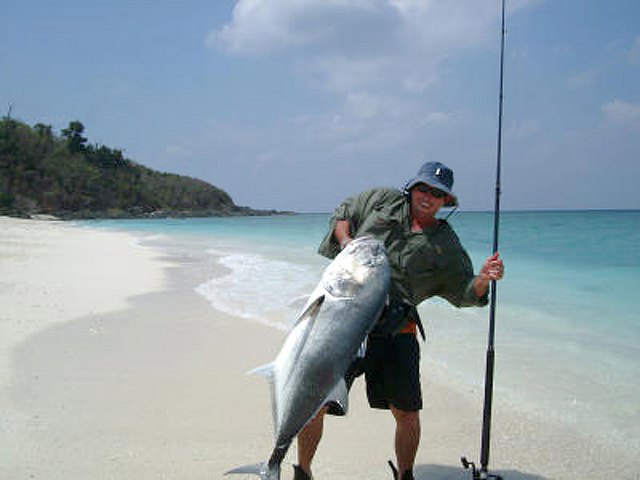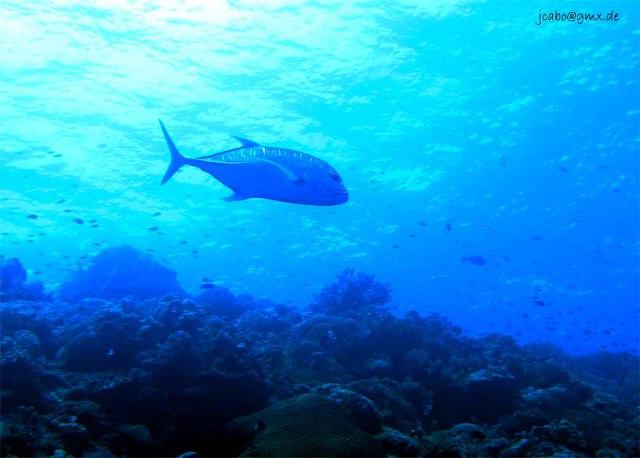ภาพที่ 1ปลากะมงพร้าว สีกุนเผือก
Caranx ignobilis (Forsskål, 1775)
Giant trevally Classification Actinopterygii | Perciformes | Carangidae
ภาพที่ 2Size / Weight / Age
Max length : 170 cm TL male/unsexed; (Ref. 9710); common length : 100.0 cm TL male/unsexed; (Ref. 5213); max. published weight: 80.0 kg (Ref. 4795)
ภาพที่ 3Environment
Reef-associated; brackish; marine; depth range 10 - 188 m (Ref. 58302)
Climate / Range
Tropical; 26°C - 29°C; 35°N - 37°S
ภาพที่ 4Distribution
Indo-Pacific: Red Sea and east coast of Africa to the Hawaiian and Marquesan islands, north to southern Japan (Ref. 559) and the Ogasawara Islands, south to northern Australia. Hybrid with Caranx melampygus found in Hawaii
ภาพที่ 5Short description
Dorsal spines (total): 9; Dorsal soft rays (total): 17-22; Anal spines: 3; Anal soft rays: 15 - 17. Head and body dusky golden dorsally, silver ventrally; fins usually pigmented grey to black. Opercular spot absent. 26-38 strong scutes. Breast without scales ventrally; a small patch of prepelvic scales. Pectoral fins falcate; anal fin with 2 detached spines.
Biology Glossary (e.g. epibenthic)
Pelagic over sand and rock (Ref. 58302). Adults occur singly and inhabit clear lagoon and seaward reefs (Ref. 9710). Juveniles found in estuaries. Feed on crustaceans (like crabs and spiny lobsters) and fishes at night (Ref. 4887). Large individuals may be ciguatoxic. The largest trevally, reaching 1.7 m in length and a weight of over 60 kg (Ref. 48635). Spawn on shallow seaward reefs and offshore banks (Ref. 37816). Sold mostly fresh and dried salted.






